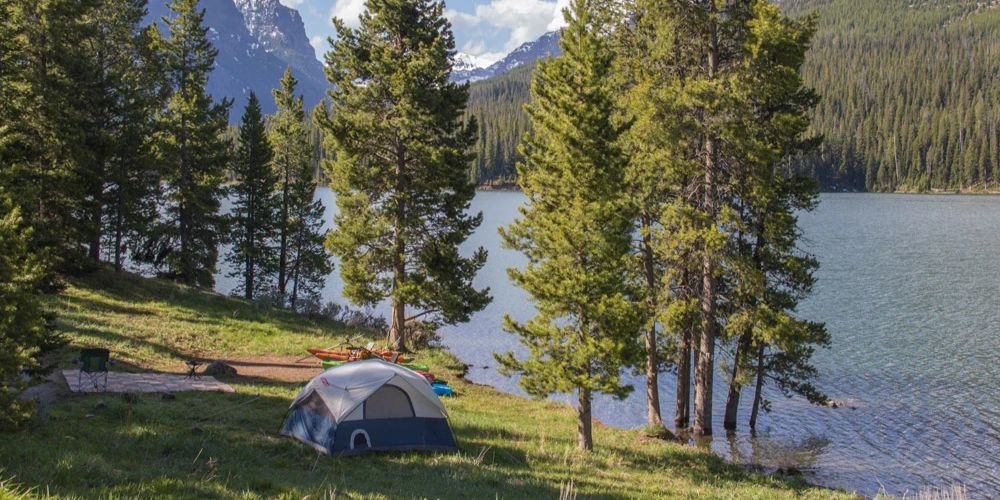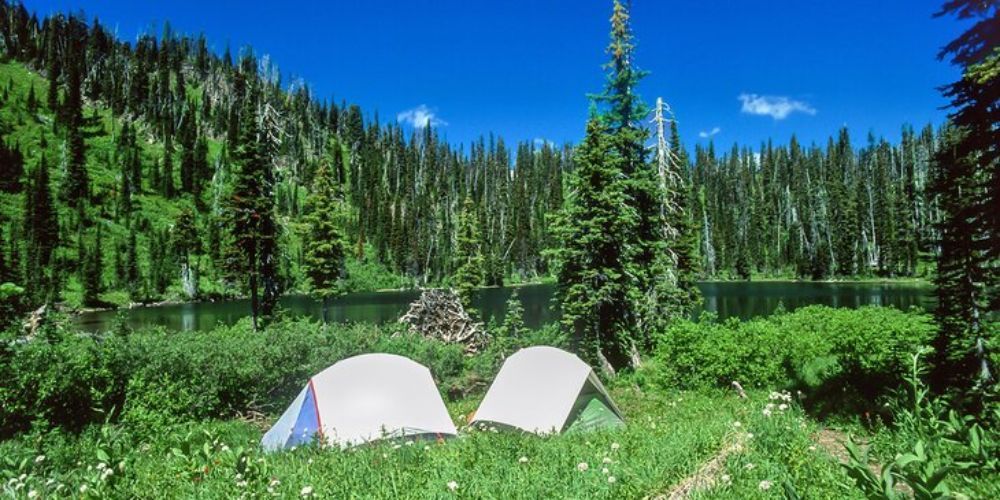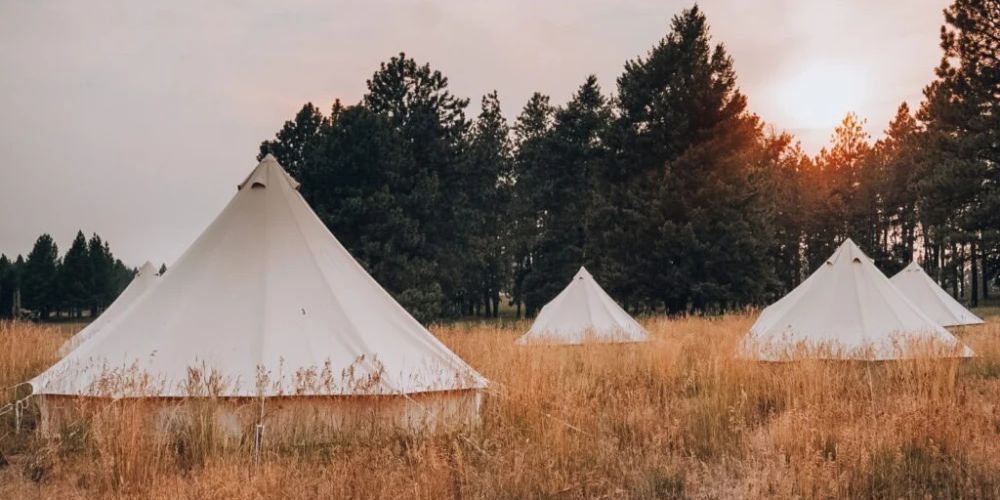Camping in Montana: Tips and Best Sites for Nature Lovers
Montana is a haven for anyone looking to immerse themselves in nature's grandeur. From its towering mountains to serene lakes, this state offers some of the most picturesque camping spots in America. Imagine waking up to the sight of glaciers shimmering under the morning sun or listening to the gentle rustle of leaves while stargazing in a meadow far from city lights. These unique experiences make camping in Montana more than just a getaway; they become unforgettable adventures etched into memory.
Planning such an adventure does come with its challenges, such as unpredictable weather and choosing the right campsite amidst so many options. However, worry not! Through extensive research and testimonials from seasoned campers, we've gathered invaluable insights to help you decide where to pitch your tent and what essential tips will make your trip both safe and enjoyable. Ready? Let’s explore some of Montana’s finest camping destinations and get you geared up for an incredible journey into nature’s heart.
Some of the best camping spots in Montana include Glacier National Park, Flathead Lake State Park, and Yellowstone National Park. Each offers stunning natural scenery, a variety of campsites, and numerous outdoor activities such as hiking, fishing, and wildlife viewing.

Top Camping Spots in Montana
When most people think of camping in Montana, they picture vast, unspoiled wilderness and breathtaking vistas. The state is rich with options, each locale telling its own story through its natural beauty.
One standout destination is Glacier National Park, a true gem in the crown of Montana's outdoor offerings. With over 1,000 campsites spread across 13 campgrounds, this national park provides everything a nature lover could wish for. Among these, Apgar and Fish Creek are particularly sought after. They offer not only spectacular views—including the park’s namesake glaciers—but also easy access to hiking trails winding through forests and alpine meadows.
As seasoned camper Jenna Rodriguez aptly puts it, “Camping at Glacier is like living in a postcard.” It's hard to disagree when you're nestled among such scenic splendor.
Yet, just a few hours south lies another treasure worth your time: Yellowstone National Park.
Famous worldwide for its geothermal features like Old Faithful and vibrant hot springs, Yellowstone also boasts incredible camping locations that attract millions of visitors each year. Within the park, Madison and Grant Village campgrounds serve as ideal bases for exploring these captivating attractions. In fact, statistics show that in 2023 alone, Yellowstone saw over 3.8 million visitors, many camping amidst the diverse ecosystems that range from lush forests to winding rivers.
Imagine waking up to the sounds of nature as you prepare for a day of adventure—it's an experience unlike any other.
For those seeking a quieter retreat from the hustle and bustle, Flathead Lake presents an inviting alternative.
This picturesque location offers serene campgrounds such as Finley Point and Wayfarers. Flathead Lake is known for its tranquil waters, making it perfect for activities like fishing, boating, and swimming. Unlike the more densely visited national parks, this area offers peace and relaxation, allowing campers to unwind while soaking in the natural beauty surrounding them.
Picture yourself casting a rod into clear blue water or enjoying a leisurely swim as gentle waves lap at the shore—these moments create lasting memories.
As you contemplate which spot aligns best with your desires, remember that thoughtful planning is crucial.
Each of these locations provides unique opportunities catering to different preferences—whether you seek heart-pounding hikes through rugged mountains, awe-inspiring geothermal wonders or serene shores by pristine lakes. Making an informed decision on where to camp will elevate your experience immensely and ensure that your connection with Montana's magnificent landscapes remains enriching throughout your trip.
With these fantastic destinations laid out before you, it's essential to consider how to effectively plan your journey for maximum enjoyment.
Tips for Planning Your Trip
Packing is a key aspect of ensuring your camping experience is enjoyable and hassle-free. To start, make a checklist tailored to your specific trip. This can help prevent you from forgetting essentials like food, cooking supplies, and personal items. When I first began camping, I learned that having a checklist not only saved me time but also gave me peace of mind knowing I had everything I needed.
As you create your packing list, consider the length of your trip and the activities you plan to engage in.
If you're planning on hiking, make sure to pack durable footwear and appropriate clothing that will keep you comfortable on the trails. For those who enjoy fishing or swimming, don’t forget your gear! Additionally, think about the food you'll need; meal planning can help reduce waste and ensure you have adequate supplies. Prepare easy-to-cook meals that require minimal cleanup to maximize your enjoyment of nature rather than spending too much time over a stove.
Don’t underestimate the importance of having enough drinking water. Hydration is critical—especially when engaging in physical activities!
Now that you’ve considered your main gear and food needs, let’s touch upon safety measures and useful tools.
Bringing a well-equipped first aid kit is essential for any camping trip. Accidents can happen; even small ones like scrapes or insect bites can become major annoyances if not treated promptly. Beyond basic bandages and antiseptics, consider adding items like allergy medication or insect repellent if you know you'll be in bug-rich areas.
Furthermore, bringing along tools such as multi-tools or compact shovels can unexpectedly prove beneficial during your trip. You might need to fix something with a bit of handyman magic or clear an area for a campfire. These tools can act as lifesavers when unforeseen situations arise.
While organizing these logistics may seem daunting at first glance, part of the charm of camping in Montana comes from its unpredictability and beauty.
Embrace spontaneity! Leave room in your itinerary to explore areas not listed on the map because sometimes the best memories come from unplanned adventures. A forgotten trail could lead you to hidden waterfalls or an open meadow filled with wildflowers waiting for an impromptu picnic.
The journey into nature connects us deeply with the world around us, making our experiences richer and more fulfilling. Let's now consider what essential items enhance this immersive outdoor experience.
Must-Have Camping Gear
Having the right gear can truly transform a camping trip from merely surviving in nature to being a delightful adventure. One of the most critical items is undoubtedly your tent. Opt for a waterproof and wind-resistant model, as you never know when the weather might change in Montana's rugged terrain. Imagine setting up camp only to have rain pour down, ruining your sleeping arrangements; that’s a scenario easily avoided with a solid tent.
Essential Items
- Sleeping Bag: Your sleeping bag should fit well with the expected climate conditions. Select one rated for at least 20°F lower than the anticipated temperature; this extra insulation lets you rest easy even if nighttime temperatures drop unexpectedly.
- Portable Stove: When campfires are prohibited due to fire hazards or regulations, having a portable stove becomes invaluable for cooking. It allows you to prepare hot meals conveniently, providing energy for your hikes, and keeps morale high when you're gathering around the dinner table in the woods after a tiring day.
- First Aid Kit: Accidents can happen anywhere, especially in an outdoor setting where your surroundings can be unpredictable. Pack a comprehensive first aid kit stocked with not just basics like band-aids and antiseptics but also more specialized items such as instant cold packs or splints for injuries that could occur during an active camping trip.
- Backpack: Comfort is key when hiking to your campsite or exploring nearby trails. Investing in a high-quality backpack pays off immensely. Choose one that's ergonomically designed with padded straps and diverse pockets to distribute weight evenly without overstressing your back.
Packing wisely sets the foundation for a great trip and opens up countless opportunities for adventure. With these essentials secured, you can focus on immersing yourself in nature's beauty rather than worrying about whether you've forgotten something crucial for survival or comfort.
Besides having the right gear, engaging in activities will enhance your camping experience and help you make the most of your time spent in Montana's stunning landscapes.
Outdoor Activities You Can't Miss
One of the most popular adventures to embark on in Montana is hiking. The state boasts over 700 miles of trails, with iconic routes like the Highline Trail in Glacier National Park standing out for their stunning vistas and accessibility. Imagine traversing a trail where the cliffs fall steeply away, revealing vast valleys painted in hues of green and gold as far as the eye can see. These trails cater to all skill levels, making it possible for families, couples, or solo adventurers to find their perfect path. You're not just walking; you’re forging a connection with nature as every step leads you deeper into the wilderness.
After enjoying those panoramic views, your next logical stop may be the pristine waters surrounding Montana.
Fishing in this region is nothing short of spectacular. The rivers and lakes teem with diverse fish species, including trout that make this state a haven for anglers. Think of casting your line into the crystal-clear waters of the Madison River or Swan Lake while the sun sets behind distant mountains. As Tom Mills—an enthusiastic local angler—puts it, “Catching a Montana trout is an experience like no other.” There's something magical about feeling that tug on your line when surrounded by such natural beauty; each catch celebrates both your patience and luck, spurring laughter and conversations with fellow campers.
But if you're seeking an escape from the bustle and want to immerse yourself further into nature, perhaps backcountry camping might pique your interest.
Backcountry camping offers solitude wrapped in tranquility where you can disconnect from society's distractions completely. Picture this: a cozy campsite nestled among towering pines, the only sounds being the rustling leaves and babbling brooks nearby. Setting up your base camp off the beaten path brings an exhilarating challenge accompanied by serene rewards. Just imagine gathering around a crackling campfire under an expansive starry sky, sharing stories and laughter with loved ones, feeling a deep sense of freedom as you embrace Montana’s unspoiled wilderness.
Exploring these immersive activities reveals not only Montana's breathtaking landscapes but also invites deeper connections with nature that are bound to leave lasting impressions.

Backcountry Camping Insights
For those pursuing a truly immersive nature experience, backcountry camping allows you to disconnect from the hustle and bustle of everyday life while connecting deeply with the wild landscapes of Montana. However, jumping into the pristine wilderness requires careful preparation and knowledge to ensure an enjoyable trip.
Permits and Preparation
First and foremost, obtaining the necessary permits is crucial. Many popular backcountry camp spots, especially in protected areas like Glacier National Park, require overnight permits. This not only helps manage visitor impact but also ensures that you're legally allowed to set up camp in designated areas. Failing to secure these permits can lead to hefty fines and may diminish your experience if you find yourself turned away. Always check site-specific regulations well in advance and, if possible, look into reservations during peak seasons to secure your spot.
Beyond permits, you need to equip yourself for the journey ahead.
Essential Skills
Having essential outdoor skills can transform your backcountry adventure from daunting to delightful. Navigating using a map and compass becomes vital when trails are either poorly marked or completely non-existent. It’s easy to lose your way among the vast mountains, valleys, and forests if you aren't prepared. Enrolling in a wilderness survival course—offered by various outdoor organizations—can provide invaluable skills such as shelter building, identifying edible plants, or even first aid techniques.
Knowing how to keep your bearings can save lives. Everyone loves technological conveniences but relying heavily on GPS can leave you vulnerable when batteries die or signal fades while deep in the wild. Make it a habit to familiarize yourself with both maps and compasses before heading out.
With permits secured and skills honed, it’s time to focus on keeping both yourself and the environment safe during your escapade.
Safety and Conservation Guidelines
While backcountry camping offers incredible freedom, it's vital to respect both your surroundings and your own safety. Adhering to Leave No Trace principles is essential; this means packing out everything you bring in, including food scraps, waste, and any debris. Additionally, be cautious around wildlife: maintain a safe distance from animals and store food properly to avoid attracting them to your campsite.
Always carry a first aid kit, know how to use all its components, and consider having bear spray handy if you're camping in bear country. It’s not just a wise precaution—it’s a testament to responsible camping practices that ensure everyone enjoys Montana's natural beauty while preserving it for future campers.
Armed with these insights on camping preparations, let's now explore protocols that enhance both personal safety and environmental stewardship during your adventures.

Safety and Conservation Guidelines
Maintaining safety and conserving natural habitats should always be top priorities for campers. When venturing into Montana's captivating wilderness, it's vital to remain alert and responsible to protect both yourself and the beautiful landscapes you're there to enjoy.
Wildlife Safety
Always store food in bear-proof containers and avoid leaving any food scraps around camp. This simple act can significantly reduce your chances of unsafe wildlife encounters. While bears are majestic, they can pose risks if surprised. Keeping a safe distance from wildlife is crucial.
In fact, approximately twelve grizzly bear encounters occur annually in Montana; proper food storage practices can notably decrease these incidents. If you spot a bear or other wildlife, remember: admire from afar with binoculars rather than closing in for a photo opportunity.
Practicing caution can make all the difference in preserving both your safety and that of the animals inhabiting the area.
Leave No Trace
Following "Leave No Trace" principles is fundamental for every camper. This isn't just about picking up after yourself; it's a philosophy aimed at minimizing human impact on the environment. Make sure to pack out all your trash—yes, even those small snack wrappers—and ensure you leave your campsite as pristine as you found it.
When it comes to campfires, moderation is key; use established fire rings to lessen impact and never gather rocks or wood from sensitive areas. Plan your hikes on designated trails to keep vegetation intact and prevent soil erosion. By adhering to these principles, we contribute to conserving Montana's natural beauty for future generations.
Essential Safety Gear
- Bear Spray: A deterrent during bear encounters
- First Aid Kit: Provides emergency medical aid
- Water Filtration System: Ensures safe drinking water
Being equipped with essential safety gear like bear spray and a comprehensive first aid kit can enhance your peace of mind while exploring. Water filtration systems are invaluable tools as well; they’ll ensure you stay hydrated without risking your health from untreated water sources.
By being well-prepared and mindful of your surroundings, you amplify both your safety and enjoyment during your Montana camping adventure, ensuring that memories made around the campfire will last long after you've returned home.
With thoughtful planning, you can revel in the stunning landscapes of Montana while keeping both yourself and nature safe.
Author: William Flaiz
Check out these other activities in Montana
Check out activities in these nearby states: Idaho , North Dakota , South Dakota , Wyoming
